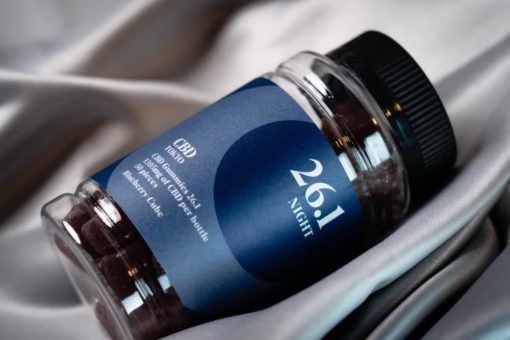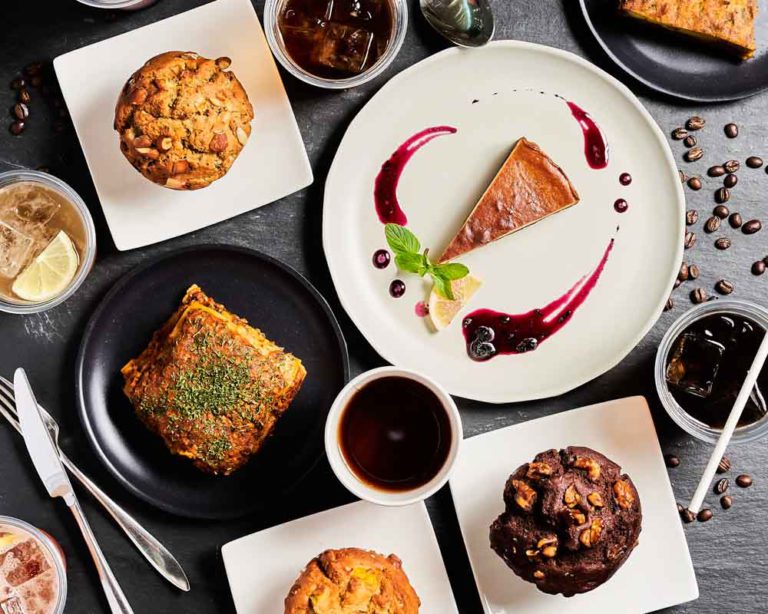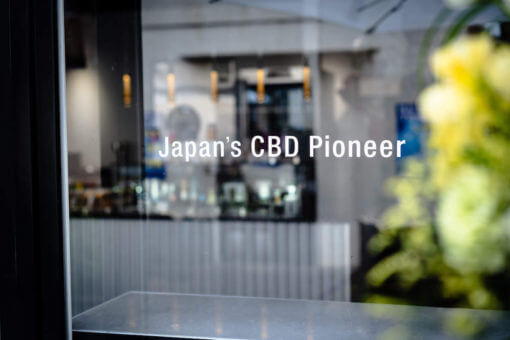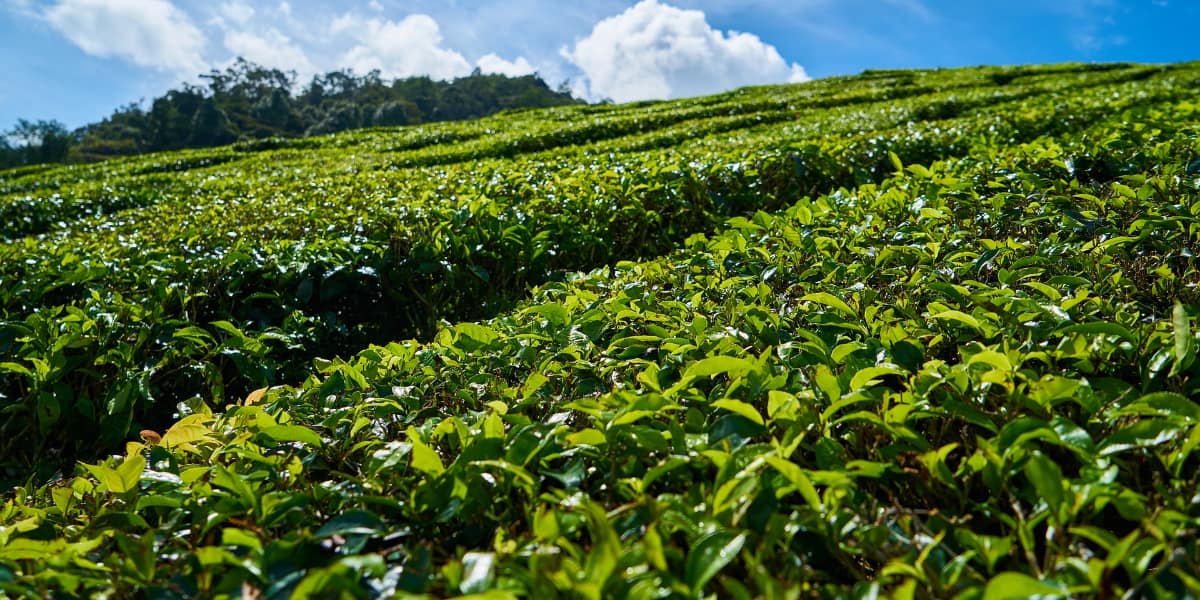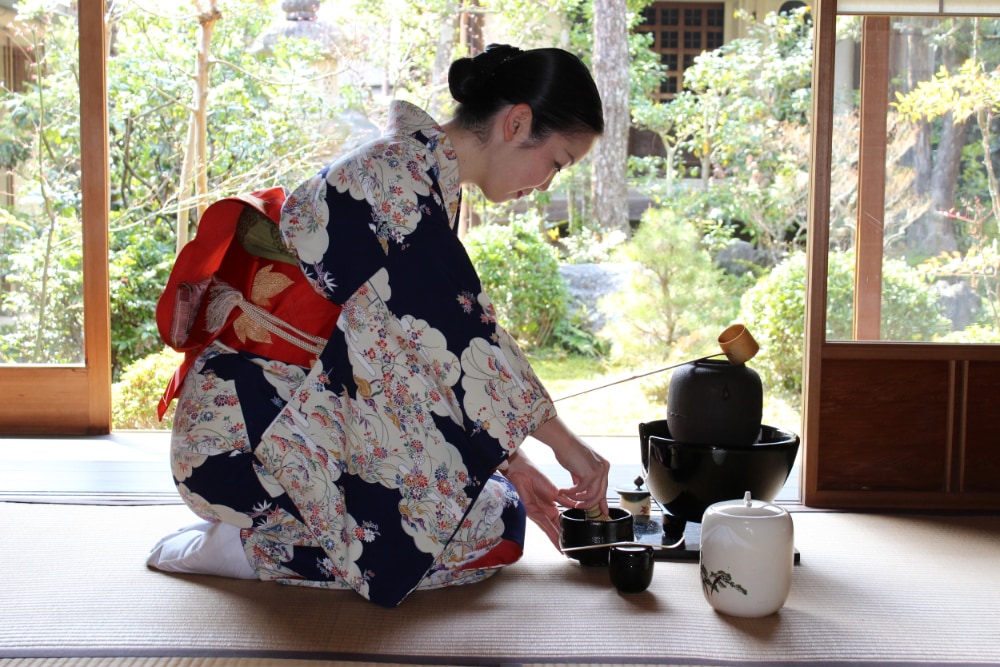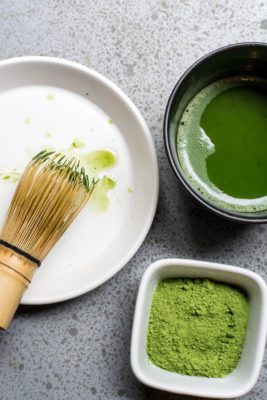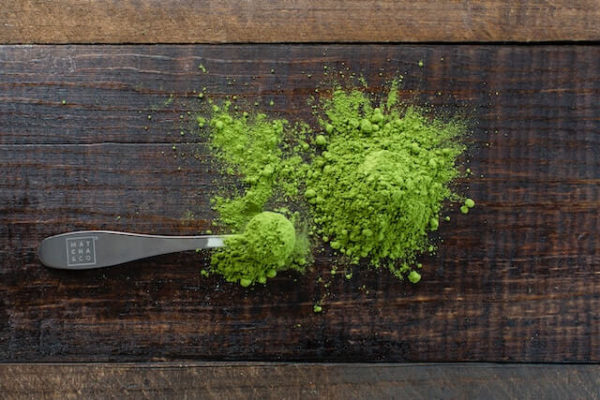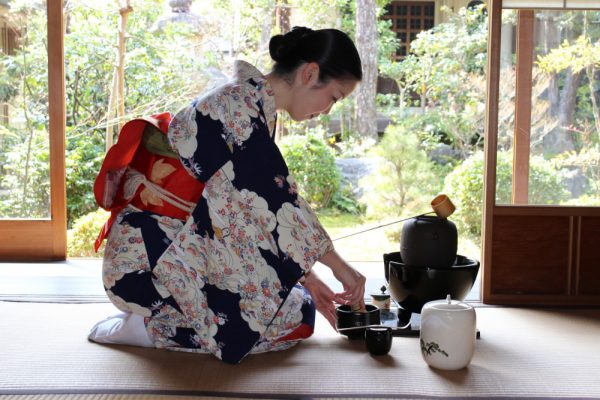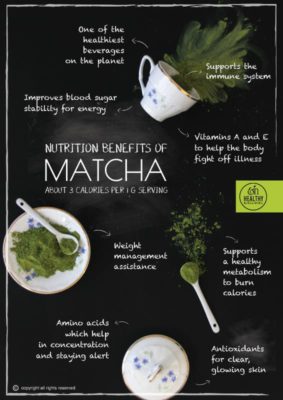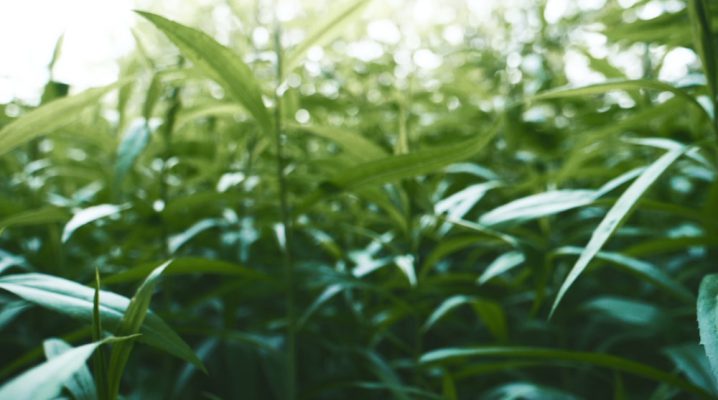Free shipping on orders over ¥5,000
Japanese Tea Ceremony
As the popularity of this tea spread throughout Japan, matcha became the centerpiece of the traditional Japanese tea ceremony. Developed in the 16th century, the traditional tea ceremony, known as Cha-no-yu or Sadô is credited to Tea Master Sen-no-Rikyu, who perfected the process which is still practiced today.
The Flow of the Ceremony
The ceremony takes place in a teahouse, with guests seated on the floor on tatami mats. A teahouse is typically four-and-a-half tatami mats, or three meters square in size. Guests enter through a small side door, the nijiri-guchi, which is designed for guests to bow upon entering promoting humility. The guests take their seats on the kyaku datami and special seating is reserved for important guests on the kinin datami. The tea master enters through the sadoguchi to begin the ceremony on the temae datami, where the tea is prepared.
Expert care is taken to follow the steps precisely to ensure a pleasant experience for guests. The atmosphere is quiet and reserved, perhaps with some music playing. The ambience is to promote an atmosphere of deep relaxation, a sense of calm (wabi) and enjoyment for all in attendance.
Sadô is a beautiful and transformative ceremony that is also very much a performance.
- Guests are welcomed by the tea master and invited to wash their hands.
- Everyone enters the teahouse.
- The tea master cleans all the implements to be used for preparing the tea, using water stored in the kensui.
- Traditional Japanese sweets (wagashi), are offered to the guests to enjoy while the tea is being made. The sweets are typically made with bean paste and can be quite elaborately designed. You can use your hands or the small bamboo toothpick to consume the wagashi before your tea is made.
- The usucha is added to the chawan using a chashaku.
- Hot water is added to the chawan from the kama using the hishaku.
- The chasen is used to stir the tea quickly to combine the matcha and water and make it frothy.
- Each cup is individually prepared and handed to the guests one at a time. When the tea master hands you your cup of tea, you bow and accept the bowl with your right hand and then place it in your left hand. Rotate the chawan three times using your right hand before drinking.
- After drinking the tea (try to consume it all before it cools or the matcha settles), use your right hand to clean the the bowl where you sipped from.
- Either place the bowl in front of you or hand it directly back to the tea master.
The traditional tea ceremony utilizes these special implements:
• Kama (kettle)
• Furo (brazier)
• Hishaku (ladle)
• Mizusashi (water jug)
• Kensui (pot)
• Chawan (ceramic tea bowl)
• Usuki/Natsume (lacquer vessel for holding tea)
• Usucha (matcha powder)
• Chashaku (bamboo tea spoon)
• Chasen (bamboo whisk)
A tea master performs the following steps to prepare the tea using these matcha implements.
Matcha History
Matcha, shrouded in mystique, has a long and treasured history in Japan. Why is this tea so important?
To understand why matcha is so highly valued in Japan, it is helpful to understand the history of this culinary treasure. The consumption of matcha in Japan dates back centuries.
Originally from China, matcha was first grown and prepared in 1191 by the Zen priest Eisai. The tea was originally available only to the aristocrats and samurai, introduced by Eisai, emphasizing its exclusivity. Once the shogun Sanetomo Minamoto was introduced to matcha, the popularity of this special tea began to grow. As word spread about the many medicinal benefits of drinking matcha on a regular basis, it became more widely available, and the traditional Japanese tea ceremony was developed as the proper preparation and serving procedure.
As a prominent Zen priest, Eisai encouraged Japanese Buddhist monks to enjoy matcha for it’s energizing and calming properties. To this day, they consider drinking matcha to be an essential step in their meditation process to calm the mind and promote inner reflection and focus.
Certain compounds within matcha, like amino acids, help to relax the body so you’re able to unwind. To this day, the preparation of matcha has been perfected to a fine art. Extreme attention is paid to quality and purity. While many varieties of tea are grown around the world, true matcha of the highest quality comes only from Japan.This is why we wouldn’t imagine making HealthyTOKYO organic matcha products anywhere but Japan. Nowadays, matcha is buzzing on the food scene and matcha style is a way of life.
How is Matcha Produced?
Pure matcha is only produced in Japan in an entirely unique process. Meticulously following this precise method results in a taste incomparable to any other variety of tea. This is how matcha goes from the leaf to your lips:
Matcha from Seed to Bowl
The Camellia sinensis plant thrives in subtropical and tropical climates, making it ideal for Japan.
About a month before the tea is to be harvested in the spring, the plants are shaded to block out the sunlight. This encourages the plants to produce more chlorophyll, for a deeper color.
Beginning in April, the plants are cut, creating aracha, which still contains stems. The “first flush” of the tea will be harvested in spring and a “second flush” will be picked in the summer.
The aracha is sorted to remove any poor quality leaves and cut once again to remove the stems as well as the veins of the leaves. This final product is known as tencha.
The tencha is dried and heated (depending on the grade) to remove any excess moisture. Drying the leaves also prevents further oxidation, taking care to maintain the color and healthful compounds in the leaves.
Once the leaves have been dried and heated, they’re blended to the desired grade and a process is used to remove any unwanted elements such as lead.
Steam is used to sterilize the matcha and stop the fermentation process (all green tea is unfermented).
Once all the previous steps are completed, it’s time to grind the tea leaves into a very fine powder. This can be done with a stone mill or a machine, depending on the desired grade.
The powder is run through mesh screens to ensure no foreign objects or unground leaves remain. Additional screening methods may also be undertaken.
The matcha is now ready to enjoy!
Matcha vs. Green Tea
The main differences betaween matcha made from tencha and regular green tea, like sencha, lies within the production process and how it’s prepared. The flavor of matcha has been described as more fragrant and grasslike than other varieties of tea and some suggest it even has a faint seaweed or spinach flavor to it. It’s the very definition of umami. By far the most unique of tea-drinking experiences, enjoying matcha shouldn’t be rushed, but savored.



